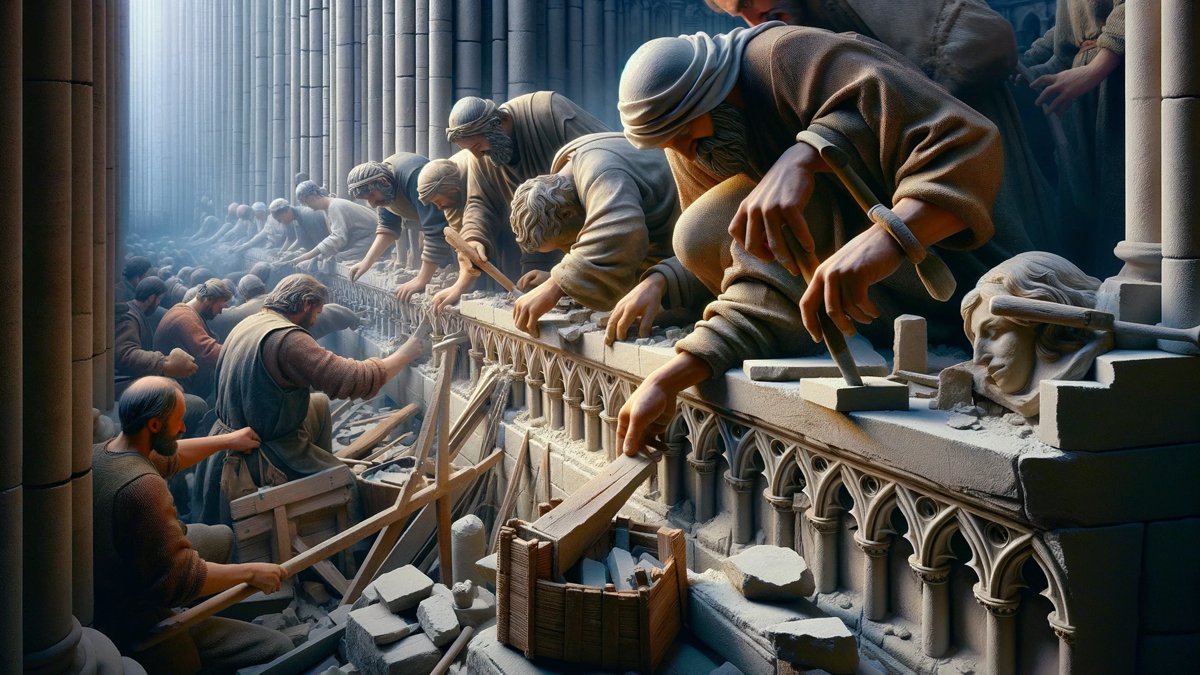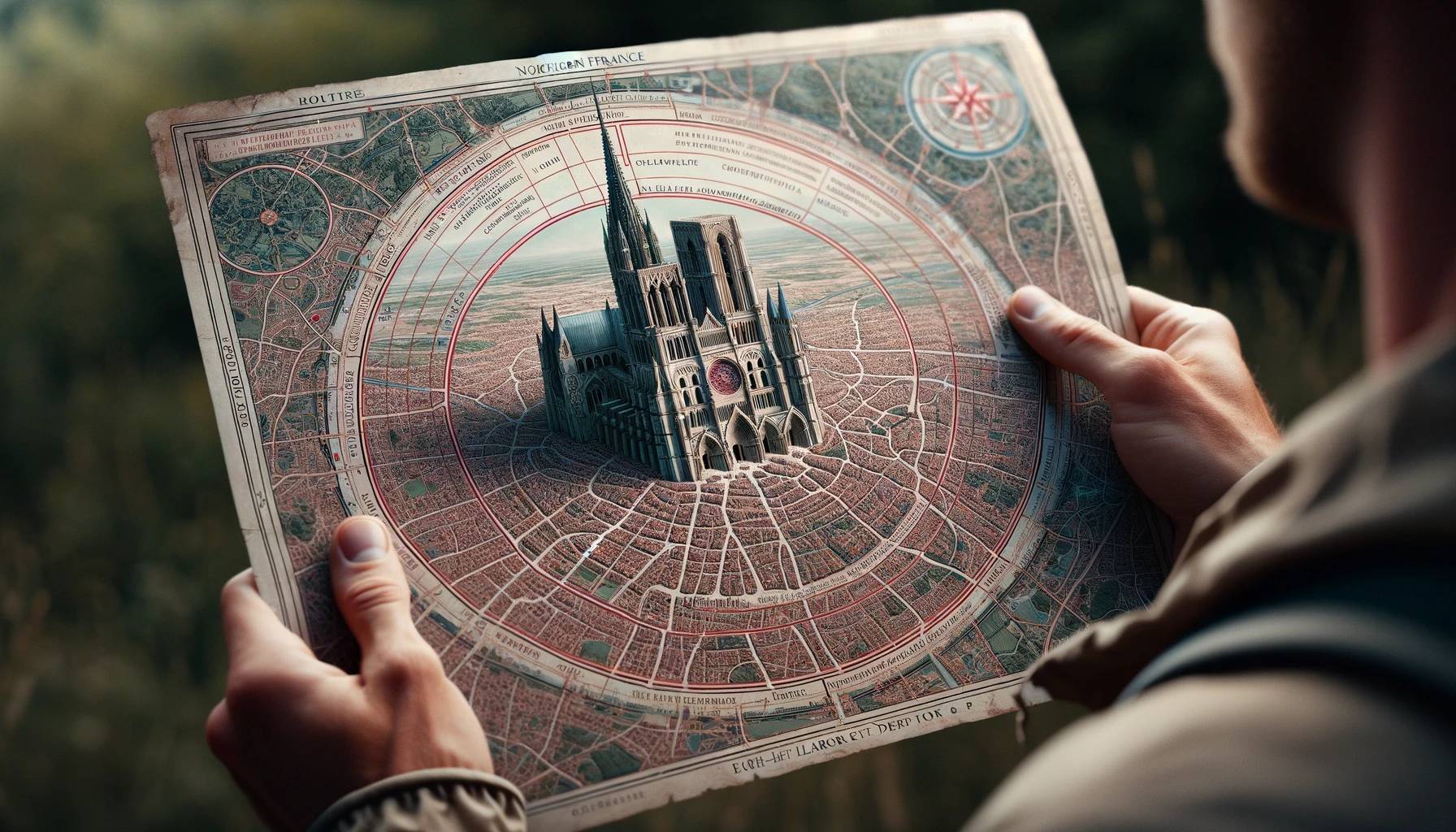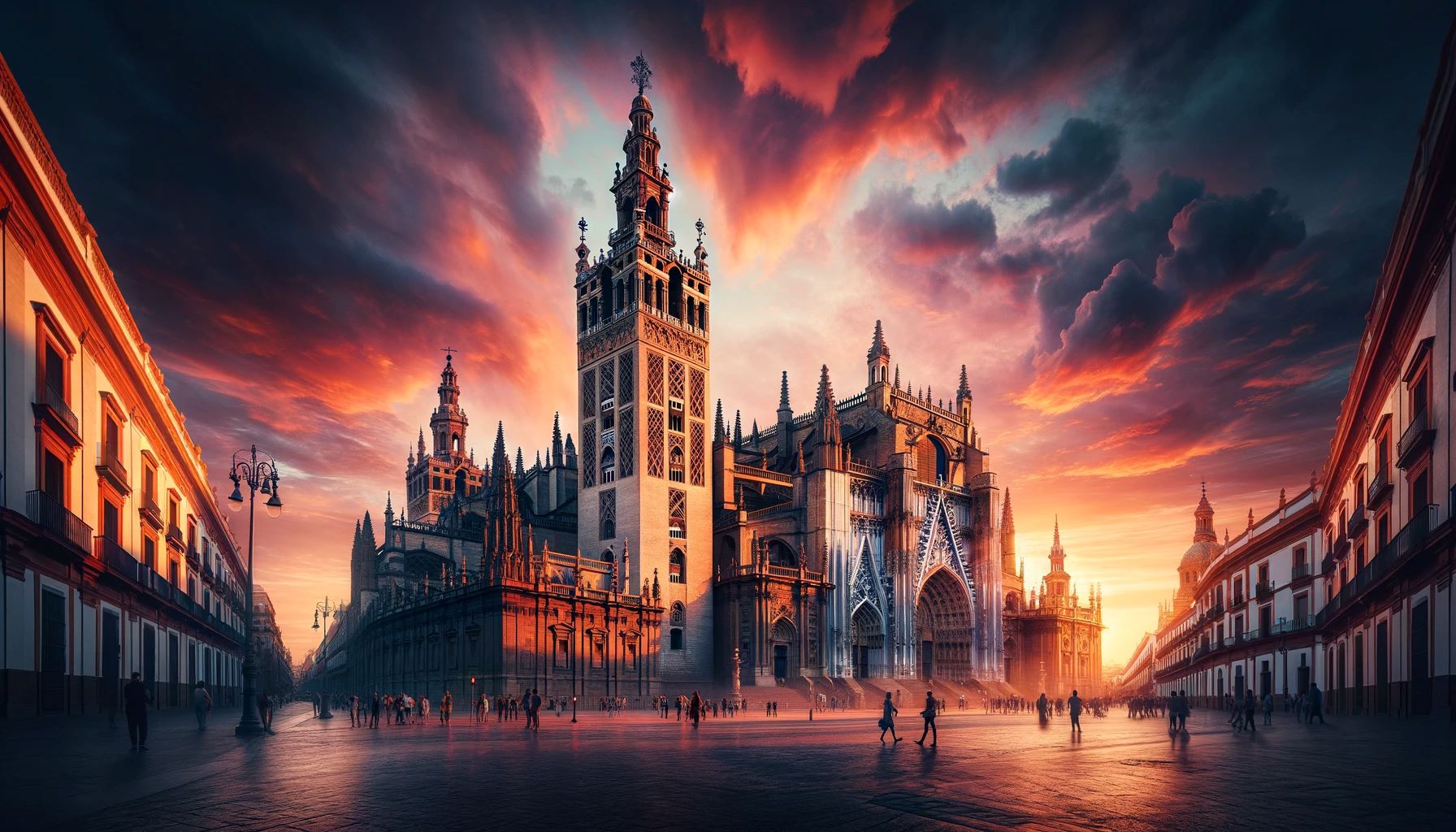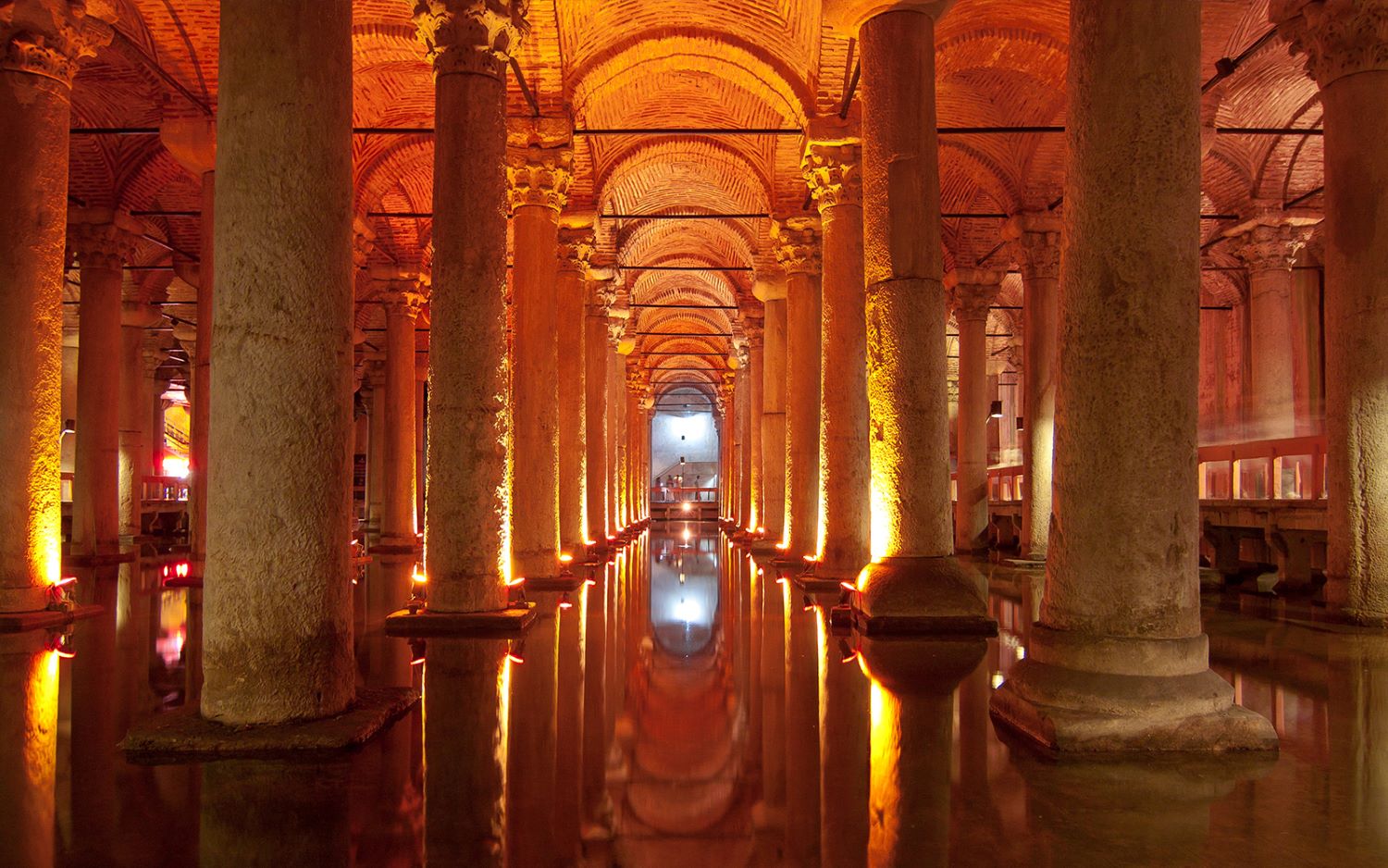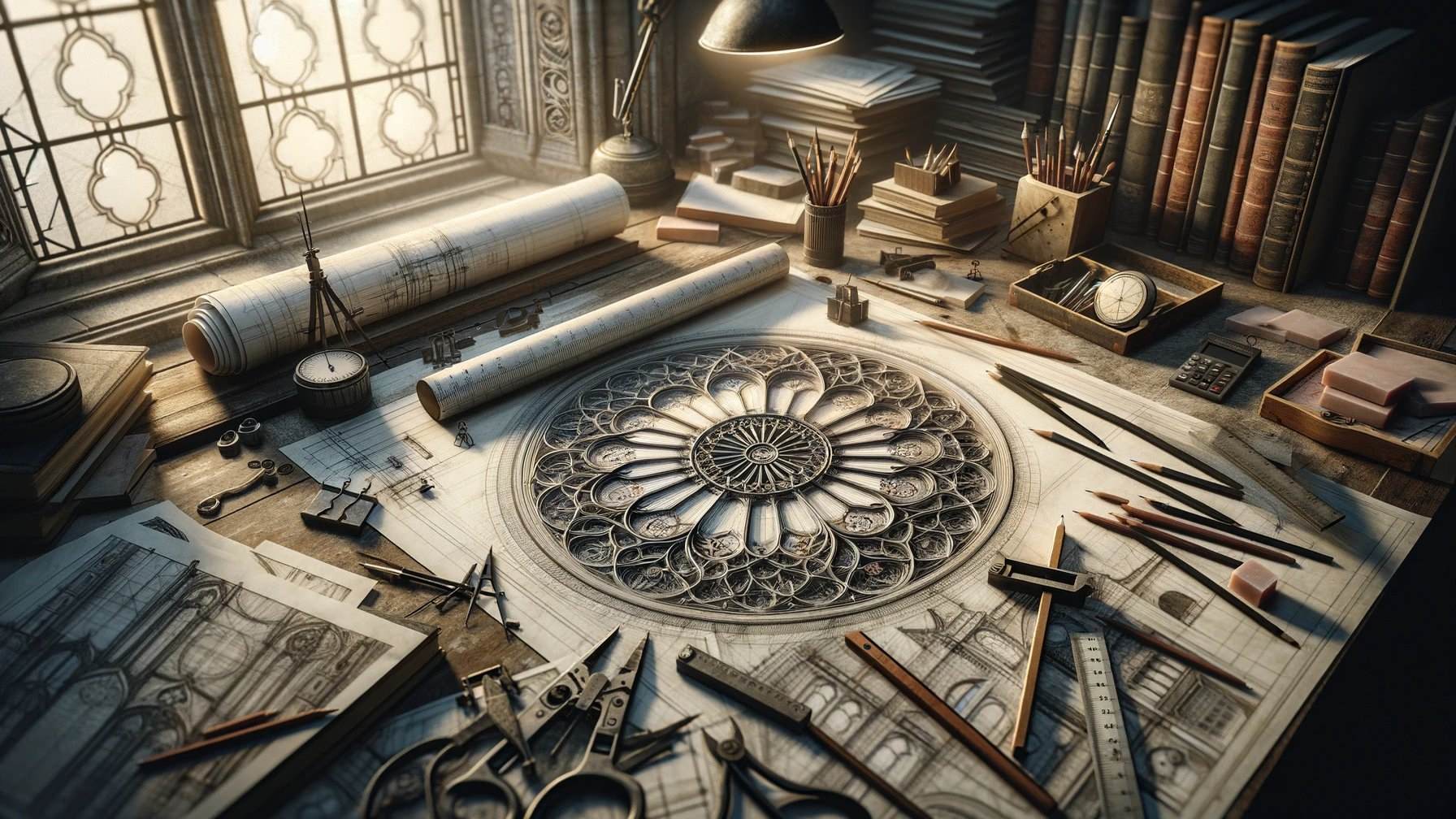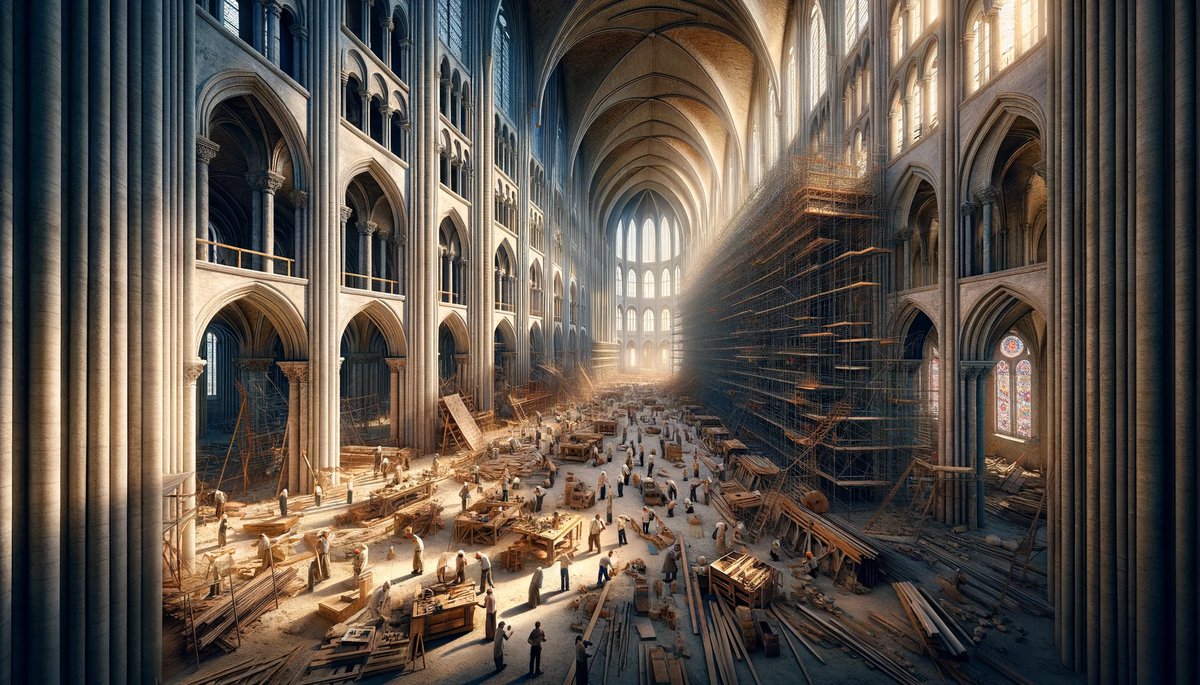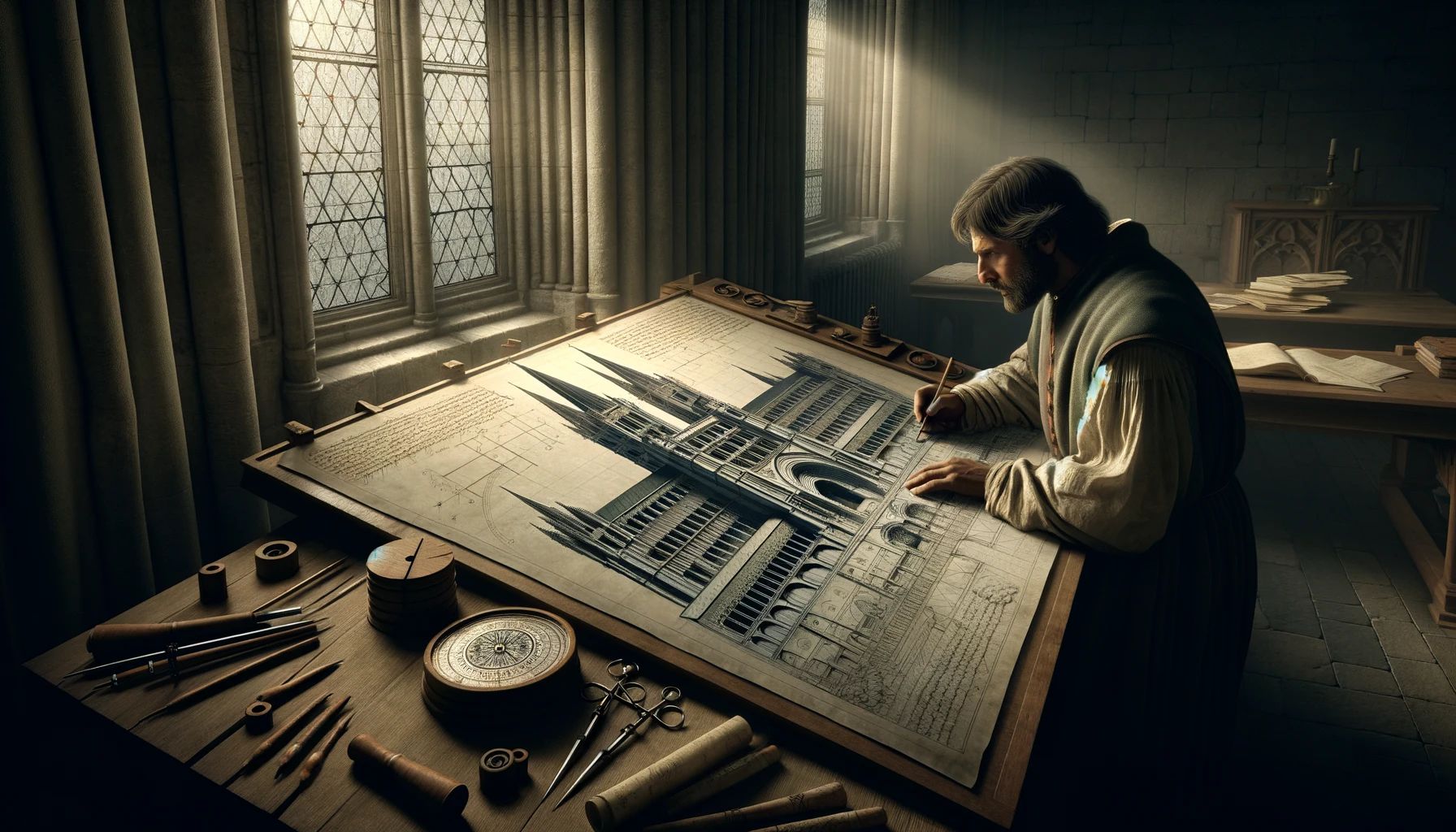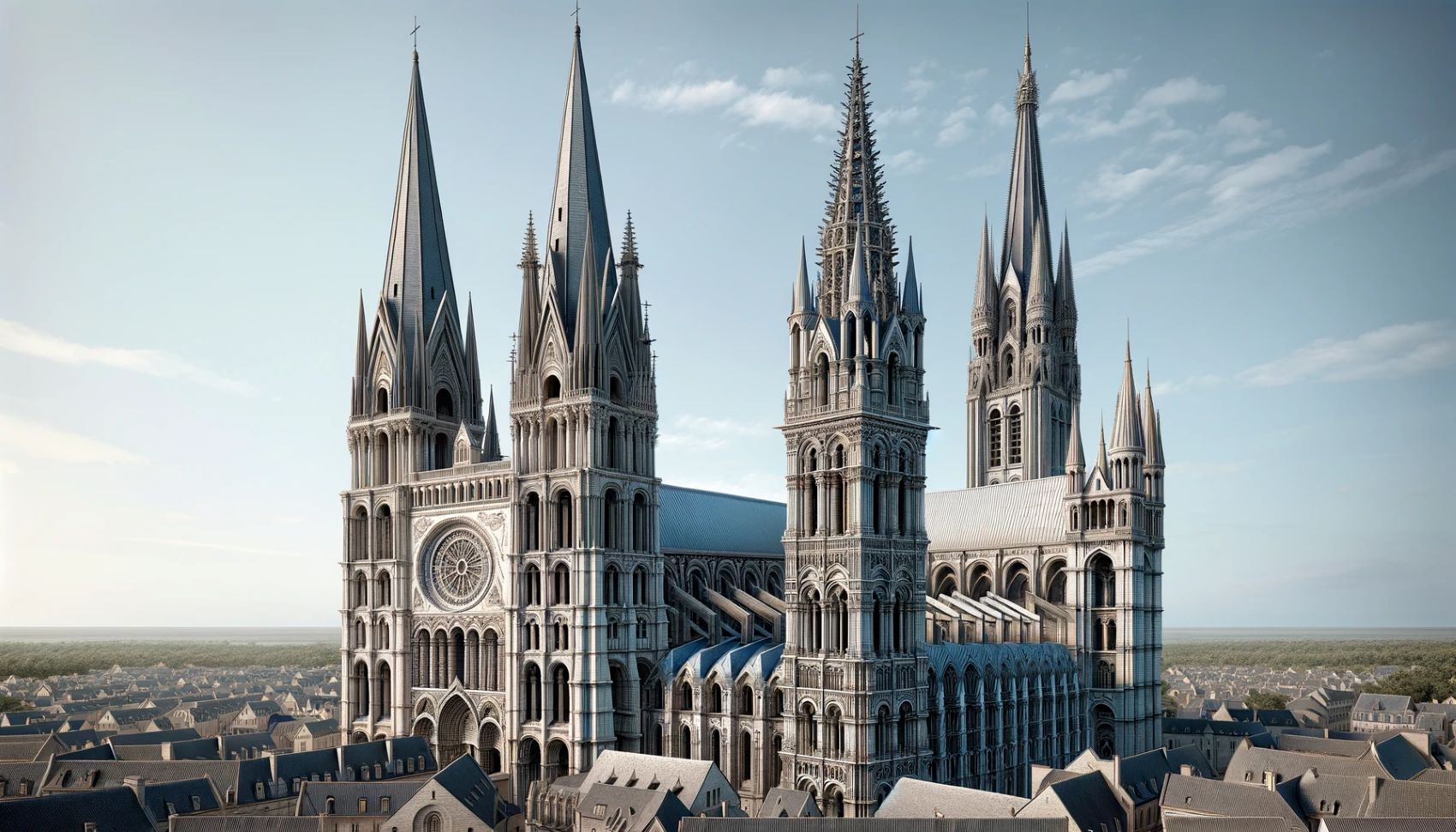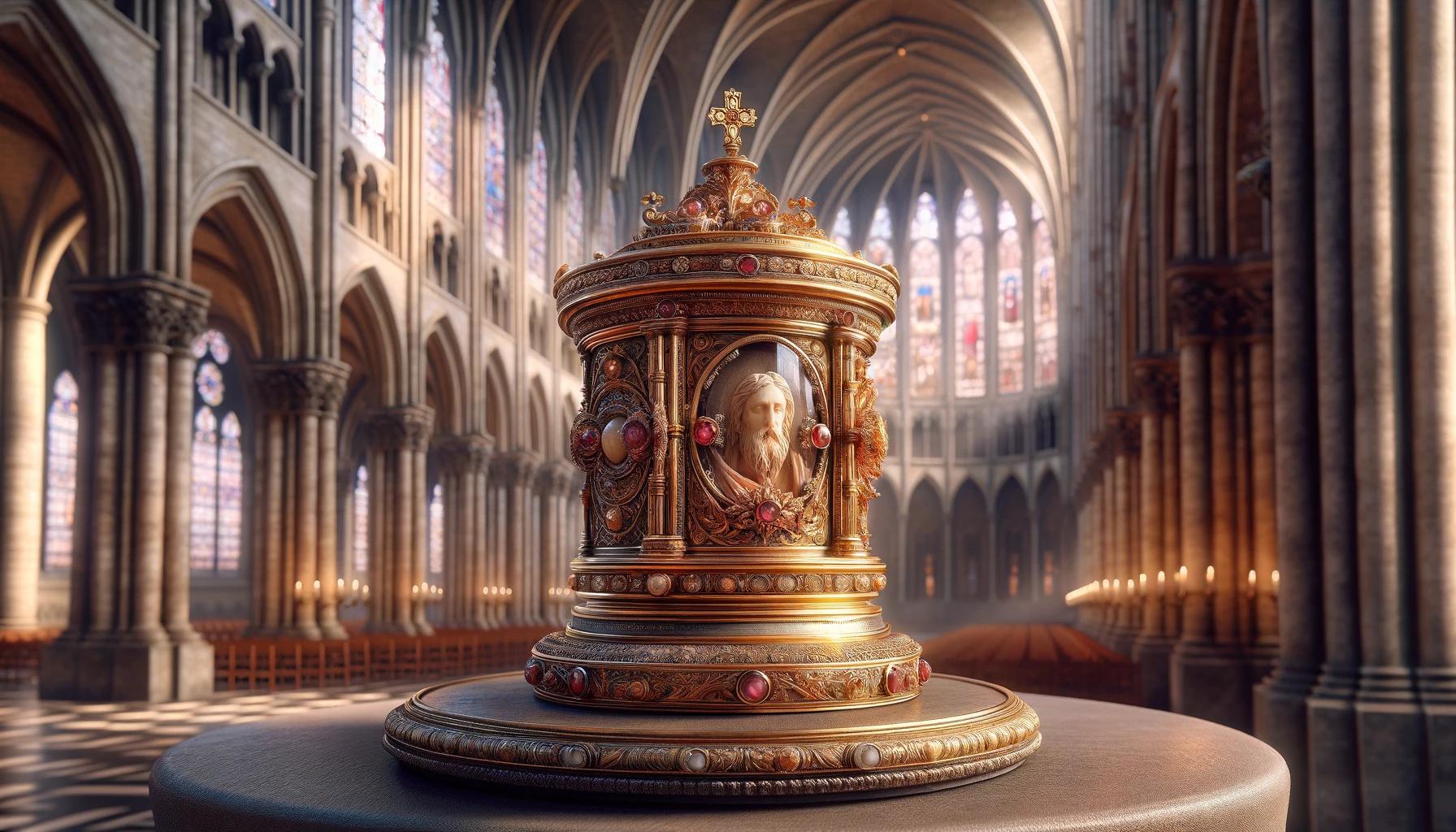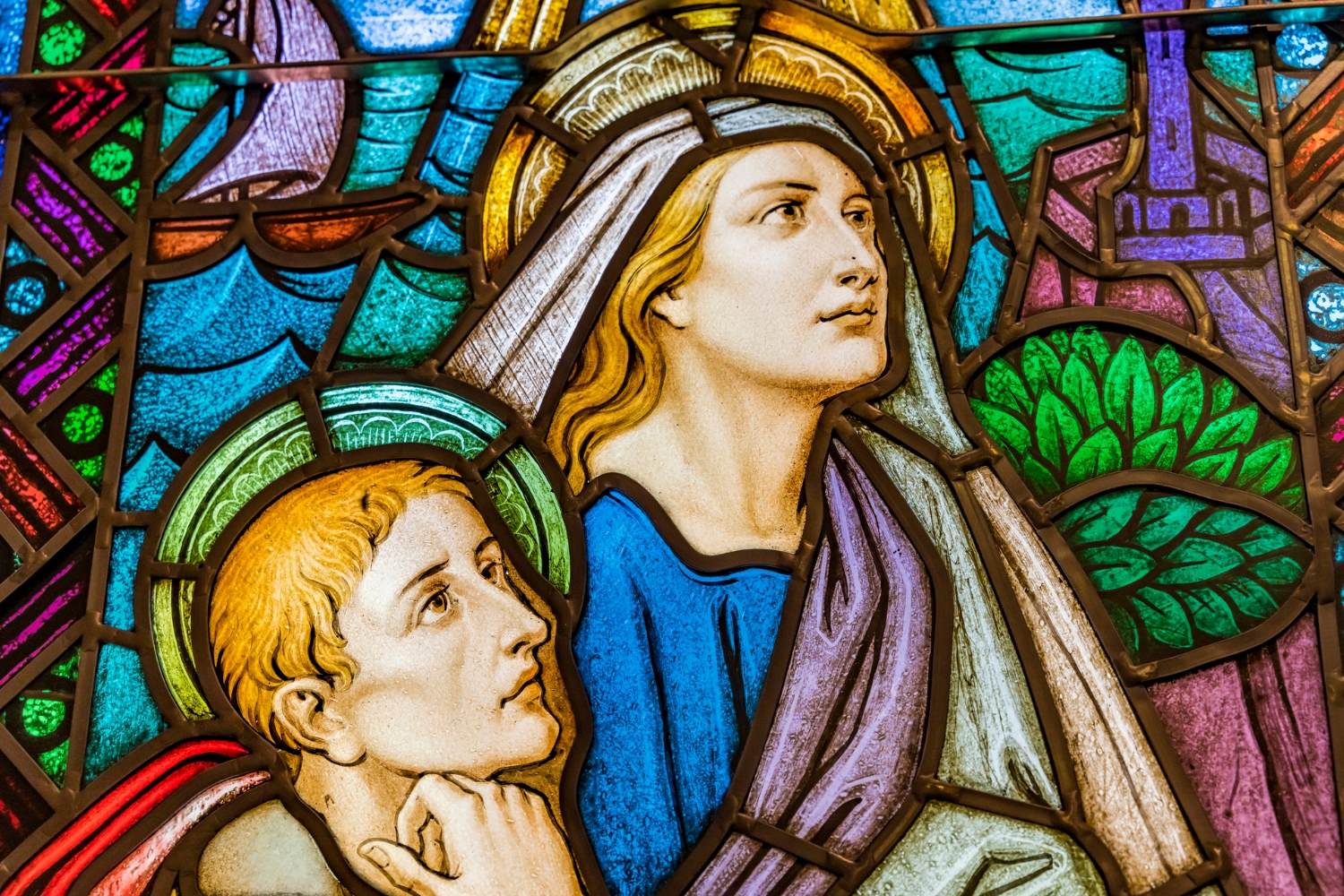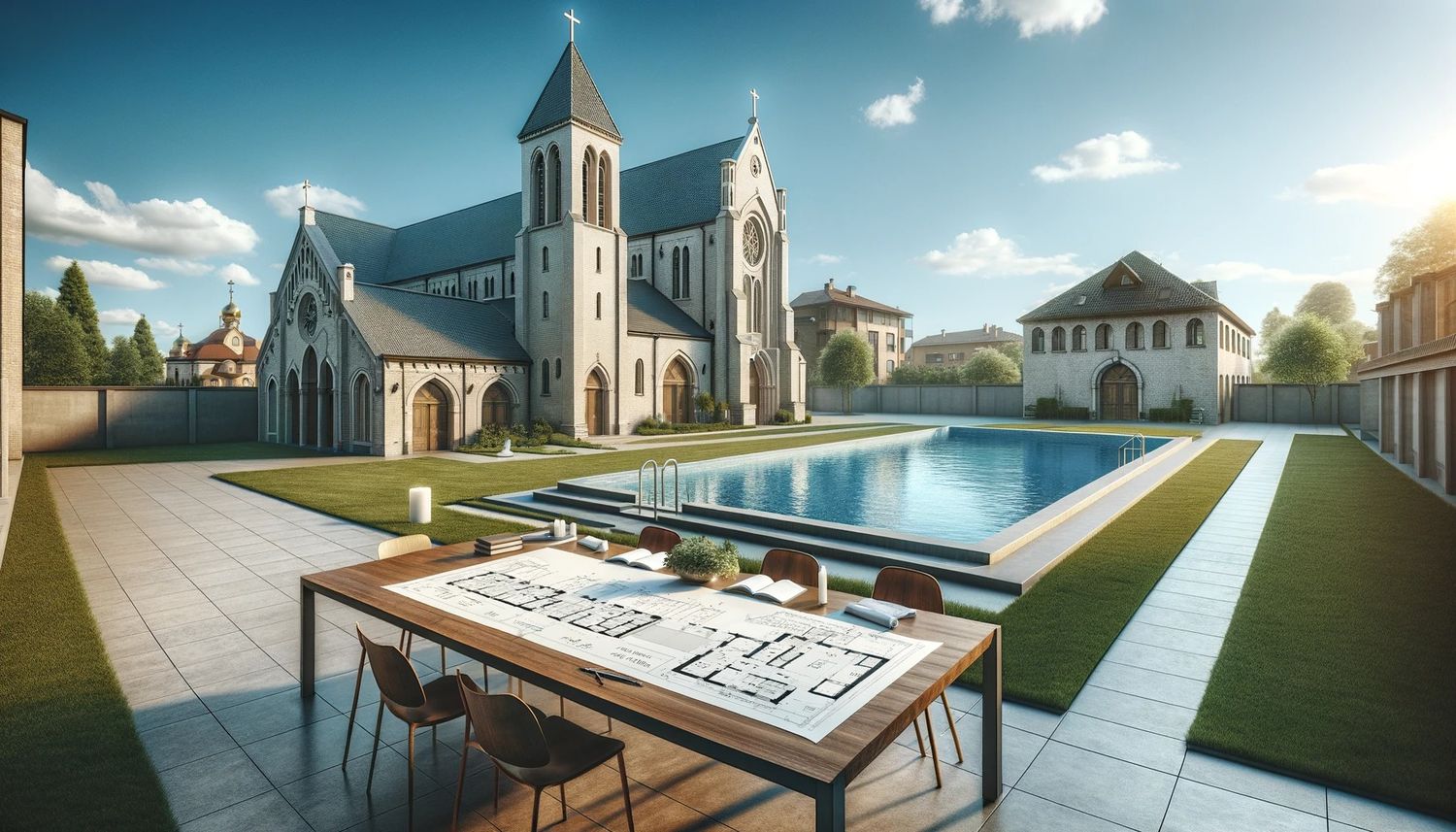Home>Arts and Culture>How Long Did It Take To Build Chartres Cathedral
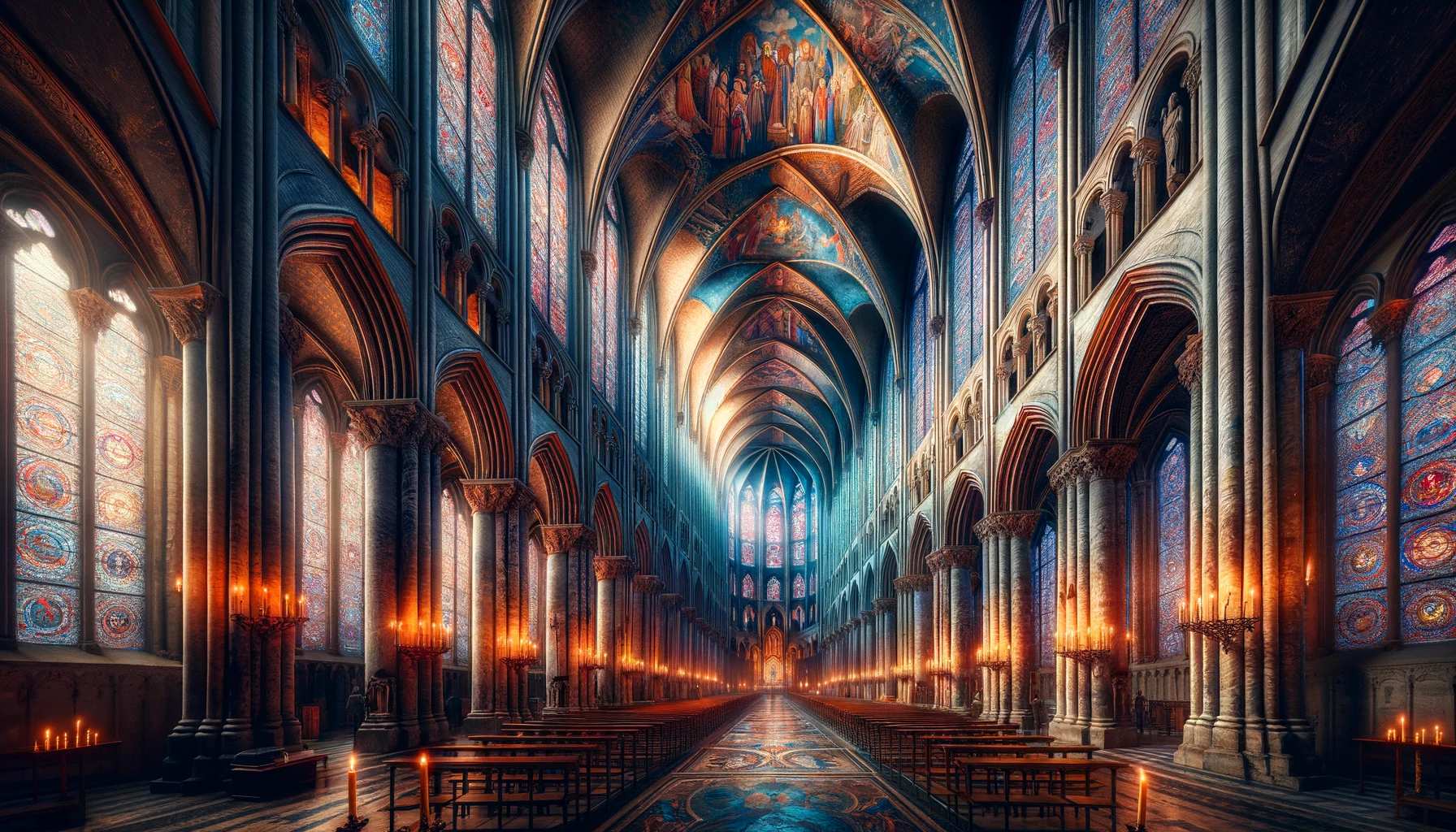

Arts and Culture
How Long Did It Take To Build Chartres Cathedral
Published: February 15, 2024
Jason DeRose, Managing Editor at Christian.net, uses his expertise in religion and journalism to deepen understanding of faith's societal impacts. His editorial leadership, coupled with a strong academic background, enriches the platform’s diverse content, earning him recognition in both journalism and religious circles.
Discover the fascinating history of Chartres Cathedral and learn about the time it took to build this iconic masterpiece. Explore the intersection of arts and culture in the construction of this architectural marvel.
(Many of the links in this article redirect to a specific reviewed product. Your purchase of these products through affiliate links helps to generate commission for Christian.net, at no extra cost. Learn more)
Table of Contents
Introduction
Chartres Cathedral, a masterpiece of French Gothic architecture, stands as a testament to the ingenuity and craftsmanship of medieval builders. Located in the picturesque town of Chartres, just 50 miles southwest of Paris, this awe-inspiring structure has captivated visitors for centuries with its soaring spires, intricate sculptures, and stunning stained glass windows.
The construction of Chartres Cathedral began in the 12th century, and it remains a symbol of the era's devotion to faith, art, and engineering. The cathedral's significance extends beyond its religious function, serving as a cultural and historical touchstone that continues to inspire awe and wonder in the modern age.
As we delve into the history of Chartres Cathedral, we will uncover the remarkable story of its creation, exploring the planning stage, construction techniques, the role of the community, and the enduring legacy of this architectural marvel. Join us on a journey through time as we unravel the mysteries and marvels of Chartres Cathedral, a timeless treasure that has stood the test of time.
The Planning Stage
The construction of Chartres Cathedral was a monumental undertaking that began with meticulous planning and visionary design. The architects and master builders of the 12th century embarked on a journey to create a structure that would stand as a testament to the glory of God and the skill of human hands. The planning stage of the cathedral's construction was a complex and multifaceted process that involved careful consideration of architectural, logistical, and spiritual elements.
At the heart of the planning stage was the architectural vision that would define the cathedral's form and function. The design of Chartres Cathedral was guided by the principles of Gothic architecture, characterized by soaring heights, pointed arches, and an abundance of natural light. The architects sought to create a space that would inspire awe and reverence, drawing worshippers heavenward through the ethereal beauty of its design. The layout of the cathedral was carefully planned to accommodate the rituals and ceremonies of the Catholic Church, with a focus on creating a sacred space that would elevate the spiritual experience of the faithful.
In addition to the aesthetic and spiritual considerations, the planning stage also involved practical and logistical challenges. The architects and builders had to contend with the limitations of medieval technology and the formidable task of sourcing materials and manpower. The construction of Chartres Cathedral required an intricate network of skilled laborers, artisans, and craftsmen, each contributing their expertise to bring the architectural vision to life. The logistics of transporting massive stone blocks, carving intricate sculptures, and assembling the delicate stained glass windows demanded careful planning and coordination.
Furthermore, the planning stage encompassed the spiritual and symbolic dimensions of the cathedral's design. Every aspect of the architectural plan was infused with religious symbolism, from the placement of statues and reliefs to the intricate patterns of the stained glass windows. The cathedral was conceived as a sacred space that would convey the teachings of the Church through visual storytelling, inviting worshippers to contemplate the mysteries of faith as they moved through its hallowed halls.
As the plans for Chartres Cathedral took shape, the architects and builders drew upon centuries of architectural tradition, blending innovation with reverence for the past. The planning stage was a time of creative ferment, as ideas were refined, adapted, and ultimately translated into the blueprints that would guide the construction process. It was a period of intense intellectual and artistic activity, marked by a shared commitment to realizing a vision that transcended the boundaries of time and space.
In the next section, we will explore the remarkable construction techniques that brought the vision of Chartres Cathedral to fruition, shedding light on the ingenuity and craftsmanship of the medieval builders who transformed stone and glass into a timeless masterpiece.
Construction Techniques
The construction of Chartres Cathedral stands as a testament to the remarkable ingenuity and craftsmanship of medieval builders. The techniques employed in bringing this architectural marvel to life were a fusion of artistry, engineering, and unwavering dedication. From the intricate stone masonry to the delicate art of stained glass, each aspect of the construction process reflected a profound commitment to excellence and innovation.
The cornerstone of Chartres Cathedral's construction was its use of innovative architectural techniques. The soaring heights and expansive interior spaces of the cathedral were made possible through the use of pointed arches, ribbed vaults, and flying buttresses. These elements not only provided structural support but also allowed for the creation of lofty, light-filled interiors that defied the limitations of traditional building methods. The use of these architectural innovations marked a significant departure from the Romanesque style, ushering in a new era of Gothic architecture characterized by grandeur and verticality.
The construction of Chartres Cathedral also relied heavily on the expertise of skilled stonemasons and artisans. The meticulous carving and shaping of the cathedral's stone elements, including columns, capitals, and sculptural reliefs, required a mastery of technique and an acute understanding of the properties of stone. The stonemasons employed a range of tools, from chisels and mallets to precision measuring instruments, to transform raw stone into intricate works of art. The precision and artistry of their craft are evident in the exquisite detailing that adorns the cathedral's façade and interior spaces, showcasing a level of skill that remains unparalleled.
Another defining feature of Chartres Cathedral's construction was the art of stained glass. The cathedral boasts an exceptional collection of stained glass windows, renowned for their vibrant colors and intricate designs. The creation of these windows was a collaborative effort that brought together master glaziers, painters, and craftsmen. The process of crafting stained glass involved the careful selection of colored glass, the painting of detailed scenes and patterns, and the assembly of individual pieces into larger panels. The result was a breathtaking display of light and color that suffused the interior of the cathedral with an otherworldly glow, transforming it into a luminous sanctuary that captivated the senses.
In every aspect of its construction, from the architectural innovations to the mastery of stone and glass, Chartres Cathedral stands as a testament to the boundless creativity and technical prowess of its builders. The techniques employed in its creation not only reflect the remarkable achievements of medieval craftsmanship but also continue to inspire awe and admiration in the modern era. As we marvel at the enduring beauty of Chartres Cathedral, we are reminded of the timeless legacy of human creativity and the enduring power of architectural innovation.
The Role of the Community
The construction of Chartres Cathedral was not merely a feat of architectural and engineering prowess; it was a collective endeavor that engaged the entire community in a shared vision of faith, art, and communal pride. The role of the community in the creation of the cathedral was multifaceted, encompassing spiritual, social, and economic dimensions that underscored the cathedral's significance as a unifying force within the town of Chartres and beyond.
At the heart of the community's involvement in the cathedral's construction was a deep sense of religious devotion and communal identity. The cathedral served as a focal point for the spiritual life of the town, drawing together worshippers from all walks of life in a shared expression of faith. The townspeople actively participated in the rituals and ceremonies associated with the construction process, offering prayers, blessings, and supplications for the success and sanctity of the endeavor. Their collective faith infused the cathedral with a profound sense of spiritual significance, elevating it from a mere architectural marvel to a sacred symbol of the community's devotion to God.
Beyond its spiritual role, the cathedral also played a central role in the social and economic life of Chartres. The construction of the cathedral provided employment and economic opportunities for a wide range of individuals, from skilled artisans and craftsmen to laborers and merchants. The demand for materials, tools, and provisions created a bustling economy that stimulated trade and commerce, fostering a sense of prosperity and vitality within the community. The construction process also fostered a sense of camaraderie and shared purpose among the townspeople, as they worked together to support the monumental undertaking that would shape the identity of their town for generations to come.
Moreover, the community's involvement extended to the ongoing maintenance and preservation of the cathedral. Even after its completion, the townspeople continued to play a vital role in caring for the cathedral, ensuring its upkeep and safeguarding its legacy for future generations. Their collective efforts in maintaining the cathedral reflected a deep sense of stewardship and pride in their cultural heritage, reinforcing the enduring bond between the community and this architectural masterpiece.
In every aspect of its creation and ongoing significance, Chartres Cathedral stands as a testament to the profound impact of community involvement in shaping the cultural, spiritual, and economic fabric of a town. The cathedral's enduring legacy is a testament to the enduring power of collective vision and shared endeavor, reminding us that the greatest achievements are often the result of a community united in purpose and passion.
Completion and Legacy
The completion of Chartres Cathedral marked a crowning achievement in the annals of medieval architecture, signaling the culmination of decades of unwavering dedication, artistic innovation, and communal spirit. As the final stones were set in place and the resplendent stained glass windows were illuminated by the sun's golden rays, the cathedral emerged as a timeless testament to the ingenuity and faith of its creators.
The legacy of Chartres Cathedral extends far beyond its physical presence, transcending the boundaries of time and space to inspire awe and wonder in the hearts of all who behold it. Its completion heralded a new era in Gothic architecture, setting a standard of excellence that would influence countless cathedrals and churches across Europe. The architectural innovations and artistic achievements embodied in Chartres Cathedral served as a beacon of inspiration for future generations of builders, craftsmen, and artists, shaping the course of architectural history for centuries to come.
The enduring legacy of Chartres Cathedral also resides in its profound spiritual and cultural significance. As a place of pilgrimage and worship, the cathedral continues to draw visitors from around the world, inviting them to experience the transcendent beauty of its sacred spaces and the timeless wisdom conveyed through its art and architecture. The cathedral stands as a living testament to the enduring power of faith and the capacity of human creativity to express the divine in tangible form.
Moreover, the completion of Chartres Cathedral solidified its role as a cultural and historical touchstone, anchoring the identity of the town of Chartres and serving as a symbol of communal pride and heritage. The cathedral remains a focal point for civic and cultural events, a gathering place for celebrations and commemorations, and a living embodiment of the town's rich history and enduring spirit.
In the centuries since its completion, Chartres Cathedral has weathered the passage of time and the challenges of history, standing as a resilient monument to human achievement and aspiration. Its legacy endures in the hearts and minds of all who have been touched by its beauty and grandeur, carrying forward the timeless message of hope, faith, and artistic excellence to future generations.
As we reflect on the completion and legacy of Chartres Cathedral, we are reminded of the enduring power of human creativity, communal endeavor, and spiritual devotion to transcend the limitations of the material world and touch the realm of the eternal. The cathedral stands as a testament to the boundless potential of the human spirit, inviting us to gaze upward in awe and wonder at the heights of human achievement and the enduring legacy of Chartres Cathedral.
